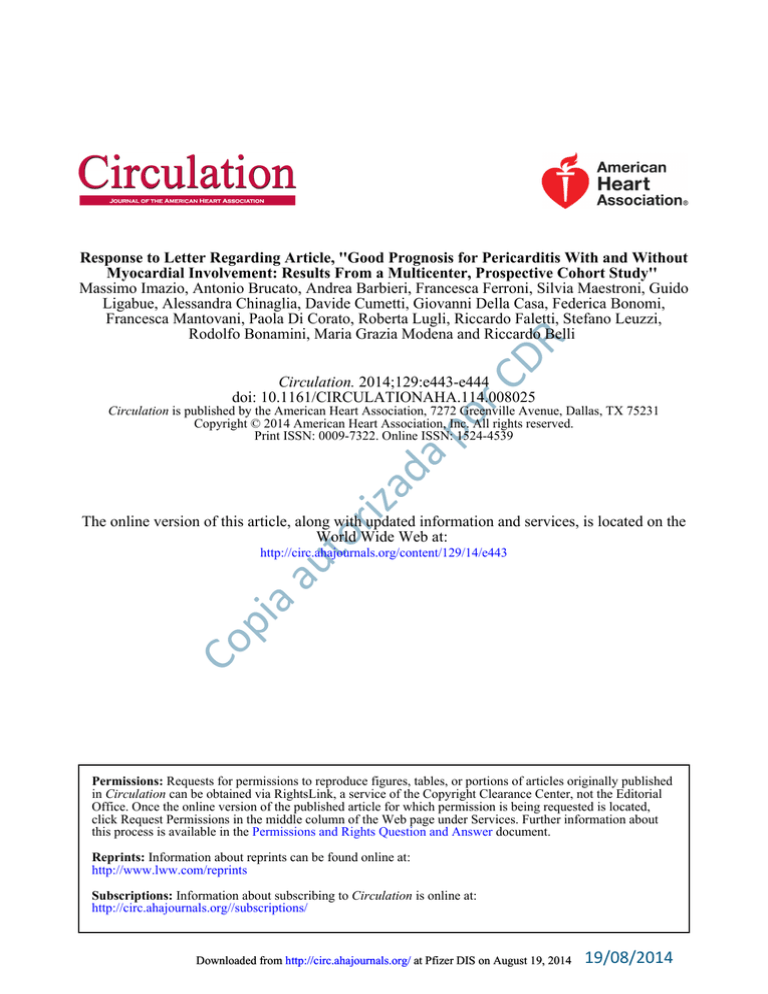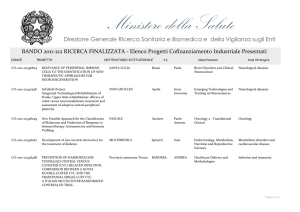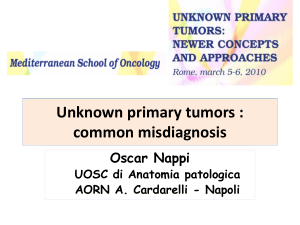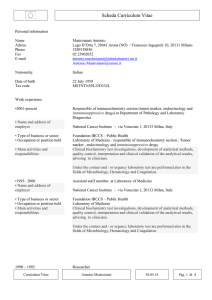
rC
DR
Response to Letter Regarding Article, ''Good Prognosis for Pericarditis With and Without
Myocardial Involvement: Results From a Multicenter, Prospective Cohort Study''
Massimo Imazio, Antonio Brucato, Andrea Barbieri, Francesca Ferroni, Silvia Maestroni, Guido
Ligabue, Alessandra Chinaglia, Davide Cumetti, Giovanni Della Casa, Federica Bonomi,
Francesca Mantovani, Paola Di Corato, Roberta Lugli, Riccardo Faletti, Stefano Leuzzi,
Rodolfo Bonamini, Maria Grazia Modena and Riccardo Belli
Circulation. 2014;129:e443-e444
doi: 10.1161/CIRCULATIONAHA.114.008025
iza
da
po
Circulation is published by the American Heart Association, 7272 Greenville Avenue, Dallas, TX 75231
Copyright © 2014 American Heart Association, Inc. All rights reserved.
Print ISSN: 0009-7322. Online ISSN: 1524-4539
or
The online version of this article, along with updated information and services, is located on the
World Wide Web at:
Co
pi
aa
ut
http://circ.ahajournals.org/content/129/14/e443
Permissions: Requests for permissions to reproduce figures, tables, or portions of articles originally published
in Circulation can be obtained via RightsLink, a service of the Copyright Clearance Center, not the Editorial
Office. Once the online version of the published article for which permission is being requested is located,
click Request Permissions in the middle column of the Web page under Services. Further information about
this process is available in the Permissions and Rights Question and Answer document.
Reprints: Information about reprints can be found online at:
http://www.lww.com/reprints
Subscriptions: Information about subscribing to Circulation is online at:
http://circ.ahajournals.org//subscriptions/
Downloaded from http://circ.ahajournals.org/ at Pfizer DIS on August 19, 2014
19/08/2014
Correspondence
Response to Letter Regarding Article, “Good
Prognosis for Pericarditis With and Without
Myocardial Involvement: Results From a
Multicenter, Prospective Cohort Study”
Massimo Imazio, MD
Cardiology Department
Maria Vittoria Hospital
Torino, Italy
Antonio Brucato, MD
Internal Medicine Department
Ospedale Papa Giovanni XXIII
Bergamo, Italy
Andrea Barbieri, MD
Policlinico
Azienda Ospedaliero-Universitaria
Modena, Italy
or
ut
pi
aa
Co
Silvia Maestroni, MD
Internal Medicine Department
Ospedale Papa Giovanni XXIII
Bergamo, Italy
Guido Ligabue, MD
Policlinico
Azienda Ospedaliero-Universitaria
Modena, Italy
Alessandra Chinaglia, MD
Cardiology Department
Maria Vittoria Hospital
Torino, Italy
da
po
rC
DR
Francesca Ferroni, MD
Cardiology Department
Maria Vittoria Hospital
Torino, Italy
iza
We thank Drs Mewton and Bresson for their interest in our article.1
The issues raised by the authors are essentially 3: the diagnosis being
based on subjective criteria, the exclusion of patients with systemic
inflammatory diseases, and the rationale for the definition of perimyocarditis and myopericarditis not being based on solid pathophysiological evidence.
First, in clinical practice, a spectrum of myopericardial syndromes
can be encountered, ranging from pure pericarditis to increasing
degrees of inflammatory myocardial involvement (myopericarditis
and perimyocarditis) to pure myocarditis.2,3 Diagnostic criteria for
acute pericarditis are well recognized and established.3–5 Although
not supported by guidelines and consensus documents, myopericarditis and perimyocarditis definitions also have been proposed on the
basis of clinical criteria.3 Myopericarditis is a primarily pericardial
inflammatory syndrome occurring when clinical diagnostic criteria
for pericarditis are satisfied and concurrent mild myocardial involvement is documented by elevation of biomarkers of myocardial damage (ie, increased troponins).1,3
In our article,1 a clinical diagnosis of myopericarditis was made
in patients with a definite diagnosis of acute pericarditis and elevation of cardiac markers of injury (troponin I or T, creatine kinase-MB
fraction) without new onset of focal or diffuse depressed left ventricular function by echocardiography or cardiac magnetic resonance.
Perimyocarditis was diagnosed in patients with clinical criteria for
acute pericarditis, elevation of cardiac markers of injury, and evidence
of new onset of focal or diffuse depressed left ventricular function
by echocardiography or cardiac magnetic resonance. The rationale for
these diagnostic criteria is that pure pericardial or predominant pericardial inflammatory involvement is not characterized by significant
impairment of myocardial function and that, on the contrary, focal
or diffuse abnormalities of ventricular wall motion or function imply
substantial myocardial inflammatory involvement.3 On this basis, we
disagree and believe that reported clinical criteria have been published
several times previously and are based on the best available clinical
evidence. Obviously, there is a need for further research and especially
a better understanding of the pathophysiology, but a proper classification with or without myocardial involvement and with or without
ventricular dysfunction is clinically useful and may help guide different management strategies (similar for pericarditis and myopericarditis, ie, pericarditis with mild myocardial involvement and preserved
ventricular function, and similar for perimyocarditis and myocarditis).
Second, the article included all consecutive patients with pericardial inflammatory syndromes (acute pericarditis, myopericarditis, and
perimyocarditis) and thus there is no reason to exclude patients with
systemic inflammatory syndromes who may be a part of the group.2,3
Third, the pathophysiology of inflammatory myopericardial syndromes is still under investigation, and the adopted classification and
diagnostic criteria are clinically based and useful in clinical practice.
We would like also to clarify that troponin was measured serially in
all patients.
In conclusion, we presented commonly adopted clinical criteria that are useful for the clinical management of patients with
mixed forms of inflammatory myopericardial involvement. Further
research is obviously needed to better understand the pathophysiology and to improve treatment, and study of the long-term outcomes
is needed.
Davide Cumetti, MD
Internal Medicine Department
Ospedale Papa Giovanni XXIII
Bergamo, Italy
Giovanni Della Casa, MD
Policlinico
Azienda Ospedaliero-Universitaria
Modena, Italy
Federica Bonomi, MD
Internal Medicine Department
Ospedale Papa Giovanni XXIII
Bergamo, Italy
Francesca Mantovani, MD
Policlinico
Azienda Ospedaliero-Universitaria
Modena, Italy
Paola Di Corato, MD
Internal Medicine Department
Ospedale Papa Giovanni XXIII
Bergamo, Italy
Roberta Lugli, MD
Policlinico
Azienda Ospedaliero-Universitaria
Modena, Italy
Riccardo Faletti, MD
Stefano Leuzzi, MD
Rodolfo Bonamini, MD
Cardiology Department
Maria Vittoria Hospital
Torino, Italy
Disclosures
None.
(Circulation. 2014;129:e443-e444.)
© 2014 American Heart Association, Inc.
Circulation is available at http://circ.ahajournals.org
DOI: 10.1161/CIRCULATIONAHA.114.008025
Downloaded from http://circ.ahajournals.org/
e443 at Pfizer DIS on August 19, 2014
19/08/2014
e444 Circulation April 8, 2014
Maria Grazia Modena, MD
Policlinico
Azienda Ospedaliero-Universitaria
Modena, Italy
results from a multicenter, prospective cohort study. Circulation.
2013;128:42–49.
2.Spodick DH, Myopericarditis/perimyocarditis: in the pericardium.
In: Spodick DH. A Comprehensive Textbook. New York, NY: Marcel
Dekker, Inc; 1997.
3.Imazio M, Cooper LT. Management of myopericarditis. Expert
Cardiovasc Rev. 2013; 11:193–201.
4. Imazio M, Spodick DH, Brucato A, Trinchero R, Adler Y. Controversial issues
in the management of pericardial diseases. Circulation. 2010;121:916–928.
5. Klein AL, Abbara S, Agler DA, Appleton CP, Asher CR, Hoit B, Hung J,
Garcia MJ, Kronzon I, Oh JK, Rodriguez ER, Schaff HV, Schoenhagen P,
Tan CD, White RD. American Society of Echocardiography clinical recommendations for multimodality cardiovascular imaging of patients with
pericardial disease: endorsed by the Society for Cardiovascular Magnetic
Resonance and Society of Cardiovascular Computed Tomography. J Am
Soc Echocardiogr. 2013;26:965–1012.e15.
Riccardo Belli, MD
Cardiology Department
Maria Vittoria Hospital
Torino, Italy
References
Co
pi
aa
ut
or
iza
da
po
rC
DR
1. Imazio M, Brucato A, Barbieri A, Ferroni F, Maestroni S, Ligabue G,
Chinaglia A, Cumetti D, Casa GD, Bonomi F, Mantovani F, Di Corato P,
Lugli R, Faletti R, Leuzzi S, Bonamini R, Modena MG, Belli R. Good
prognosis for pericarditis with and without myocardial involvement:
Downloaded from http://circ.ahajournals.org/ at Pfizer DIS on August 19, 2014
19/08/2014



